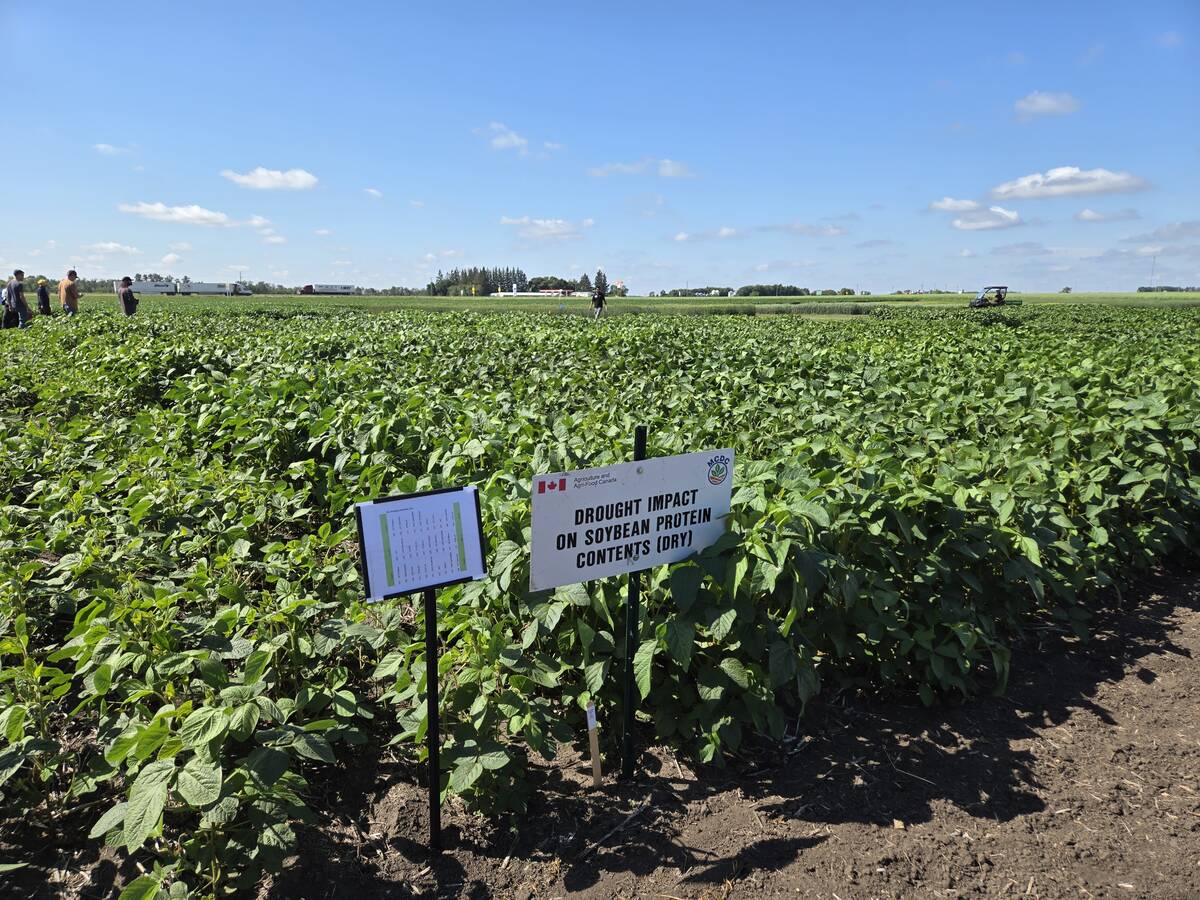CALGARY – Canadian cattle producers are reacting less dramatically to radically lower cattle prices than are their American counterparts.
Statistics Canada released its semi-annual count of cattle and calves on farms earlier this week.
It reported the Canadian cattle herd, as of Jan. 1, had grown by 4.1 percent to 13.37 million head, the largest January inventory in 20 years.
Of that, 4.39 million head are beef cows, whose numbers grew by 2.6 percent from 1995 to 1996. At 3.68 million head, three out of four animals are located in Western Canada.
Read Also

Carberry field day looks for agriculture solutions
Manitoba farmers explored research solutions for resilient crops, perpetual agronomic issues and new kinds of agricultural products at a field day at the Manitoba Crop Diversification Centre in Carberry on Aug. 6.
Canadian producers told Statistics Canada they kept 856,000 head of beef heifers for replacement in 1996, an increase of 3.5 percent over 1995.
Compare these numbers to the recent inventory of the U.S. beef cow herd released by the U.S. department of agriculture.
It showed a one percent increase in overall cattle numbers and a four percent drop in replacement beef heifers.
“A year from now I think we will be able to look back and peg this report as the peak for the current cattle cycle,” said Anne Dunford, analyst with Canfax in Calgary.
There are signs, both in this report and in recent behavior of the market, that the Canadian cycle has entered the liquidation phase, Dunford said.
The report showed the number of slaughter heifers increased by 15.6 percent in a year’s time, to 525,000 head.
In addition,# Dunford said more heifers entered feedlots last fall and those animals are showing up in slaughter statistics. Heifer slaughter is up eight percent so far.
But the Statistics Canada report doesn’t have the same signs of a reversal in the cycle as the U.S. report.
In fact, Dunford thinks Canada’s liquidation phase may lag the U.S. cattle cycle by about a year.
Low dollar shielded producers
To understand why, look back at 1994. Dunford said a low Canadian dollar helped insulate the Canadian industry from lower prices that were already hurting cow-calf producers in the U.S.
Ron Gietz, livestock analyst with Alberta Agriculture in Edmonton, agreed the Statistics Canada report shows Canada may be a year or two out of sync with the U.S. but Canada may be catching up.
Since Jan. 1, feeder cattle prices have dropped by about $10 per cwt., a compelling reason for cattle producers to keep selling, Gietz said.
Prices for breeding stock are also soft. Females that would have gone back into the breeding herd, as they did during the growth phase of the cycle, are now going for slaughter, Gietz said.
Both Gietz and Dunford remind producers that liquidating peak numbers means the industry is going to have large supplies of beef in the next year, including a bigger 1995 calf crop that still hasn’t been completely fed out.
“There’s no relief on the supply side for 1996,” said Gietz. “All the tough work is ahead.”














